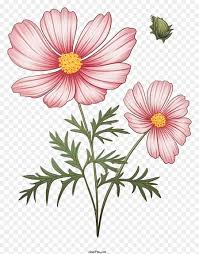Flowers, with their innate beauty and ecological significance, are key players in environmental restoration and landscape regeneration efforts worldwide. From restoring degraded ecosystems to enhancing urban green spaces, flowers contribute to biodiversity conservation, soil stabilization, and ecosystem resilience. Understanding the multifaceted ways in which flowers are utilized in environmental rehabilitation and landscape revitalization sheds light on their pivotal role in creating sustainable and resilient environments for future generations.

Erosion Control and Soil Stabilization
Flowers play a crucial role in erosion control and soil stabilization efforts, particularly in areas prone to land degradation, erosion, and desertification. Their extensive root systems help bind soil particles together, preventing erosion caused by wind, water, or human activities.
For example, species such as lavender, yarrow, and coneflowers are utilized in erosion control projects, where their deep-rooted systems anchor soil and prevent sediment runoff. Additionally, ground cover flowers like creeping thyme and sedum create dense mats that protect soil from erosion while adding beauty to landscapes.
Habitat Restoration and Biodiversity Enhancement
Flowers are integral to habitat restoration initiatives aimed at recovering degraded ecosystems and enhancing biodiversity. By reintroducing native flower species into disturbed habitats, restoration practitioners can recreate natural plant communities and provide essential resources for wildlife.
In wetland restoration projects, flowers such as marsh marigold and purple loosestrife are planted to restore hydrological functions, filter pollutants, and provide habitat for amphibians, birds, and aquatic species. Similarly, in forest restoration efforts, flowers like trilliums and bloodroot are reintroduced to enhance understory diversity and support pollinators and wildlife.
Pollinator Habitat Creation and Conservation
Flowers play a central role in pollinator habitat creation and conservation, supporting bees, butterflies, hummingbirds, and other pollinating insects crucial for ecosystem functioning and food production. By planting flower-rich habitats, conservationists can provide nectar and pollen sources for pollinators while promoting genetic diversity and population resilience.
Pollinator gardens, roadside plantings, and urban green spaces are designed with a diversity of flowering plants that bloom throughout the seasons, ensuring a continuous food supply for pollinators. Native flowers like milkweed, black-eyed susan, and bee balm are particularly valuable for supporting local pollinator populations and enhancing ecosystem services.
Phytoremediation and Pollution Mitigation
Flowers are employed in phytoremediation projects to mitigate pollution and improve soil and water quality in contaminated sites. Certain flower species have the ability to absorb, metabolize, or sequester pollutants such as heavy metals, hydrocarbons, and pesticides, thereby detoxifying the environment and restoring ecological balance.
For example, sunflowers are known for their ability to accumulate heavy metals from soil, making them valuable in remediation of contaminated sites such as mining areas or industrial zones. Similarly, aquatic plants like water lilies and lotus flowers are used in constructed wetlands to filter pollutants from wastewater and improve water quality.
Urban Greening and Aesthetic Enhancement
Flowers are essential components of urban greening initiatives aimed at enhancing the quality of life in cities and towns. By incorporating flowers into parks, plazas, streetscapes, and rooftop gardens, urban planners and landscape architects create vibrant green spaces that provide numerous benefits for residents and visitors alike.
In urban environments, flowers not only beautify landscapes but also provide shade, reduce urban heat island effects, and improve air quality by filtering pollutants and capturing carbon dioxide. Additionally, flower-filled public spaces encourage social interaction, physical activity, and mental well-being, fostering a sense of community and belonging.
Conclusion
Flowers are invaluable allies in environmental restoration and landscape regeneration efforts, offering myriad benefits for ecosystems, communities, and future generations. By harnessing the power of flowers to stabilize soils, enhance biodiversity, support pollinators, remediate pollution, and beautify landscapes, we can create sustainable and resilient environments that thrive in harmony with nature.
As stewards of the planet, it is imperative that we recognize the importance of flowers in ecological restoration and conservation and integrate them into our efforts to protect and preserve natural habitats and landscapes. By working together to harness the potential of flowers, we can create a greener, healthier, and more vibrant world for all living beings.